8 Best Canon Cameras in 2024: Reviews & Top Picks
Last Updated on
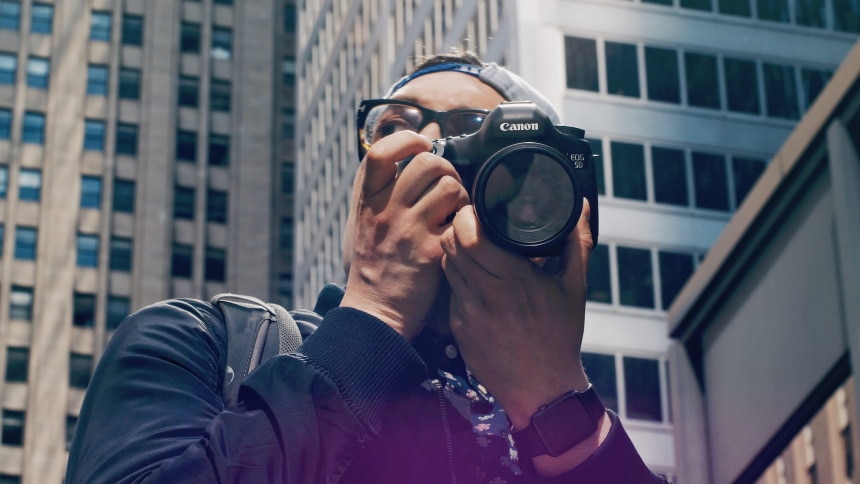
Canon is one of the most prolific camera makers in the world, making some of the most high-end cameras used by photographers everywhere. They have a wide range of options to choose from, whether you want something affordable or the very best money can buy. To help you choose the best Canon camera for your needs, we have reviews of some of their best offerings. Let’s check them out.

A Quick Comparison of Our Winners (2024)
| Image | Product | Details | ||
|---|---|---|---|---|
| Best Overall |
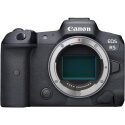 |
Canon EOS R5 |
|
CHECK PRICE |
| Best Value |
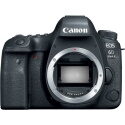 |
Canon EOS 6D Mark II |
|
CHECK PRICE |
| Premium Choice |
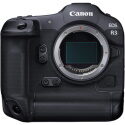 |
Canon EOS R3 |
|
CHECK PRICE |
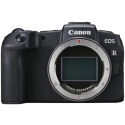 |
Canon EOS RP |
|
CHECK PRICE | |
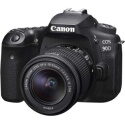 |
Canon EOS 90D |
|
CHECK PRICE |
The 8 Best Canon Cameras
1. Canon EOS R5 – Best Overall
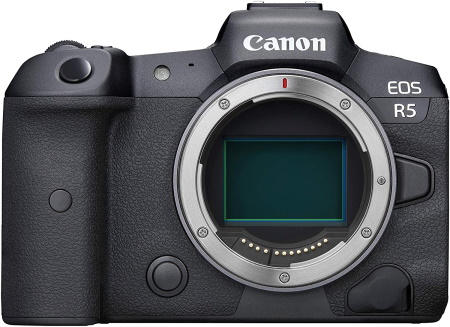
| Type | Mirrorless |
| Megapixels | 45 megapixels |
| ISO Range | 100–51,200 |
Unparalleled picture quality, insanely useful autofocus, and 8K video quality capabilities combine to make the best overall camera on our list, the Canon EOS R5. While the picture quality is amazing, what makes this Canon’s new flagship camera is the ability to shoot and store uncropped raw 8K video at nearly 30 frames per second (FPS). For videographers focused on quality, it’s nothing short of revolutionary. The only downside of note is that it may overheat when shooting a lengthy 8K video, but that shouldn’t be a problem for most people. Because of all this, this is our choice for the best overall Canon camera.
- Peerless image and video quality
- 5,940-zone autofocus
- Can shoot and store raw 8K footage at 29.9 FPS
- Mechanical & electronic shutter for maximum control over images
- 15-inch tilting touchscreen
- May overheat when shooting 8K video for long periods
- Very expensive
2. Canon EOS 6D Mark II – Best Value

| Type | DSLR |
| Megapixels | 26.2 megapixels |
| ISO Range | 100–40,000 |
The best Canon camera for your money is undoubtedly the EOS 6D Mark II, the company’s most affordable full-frame DSLR camera. With a full-frame sensor, the 6D Mark II can take in more light, thus yielding more megapixels than other comparable cameras. For viewfinder shooting, it has a robust 45-point autofocus and Canon’s dual-pixel CMOS AF for live view photos. The control layout is reasonably intuitive, and the fully articulating rear screen is awesome. This makes it the best Canon camera for the money.
- Full-frame design yields more detailed photos
- 45-point autofocus
- User-friendly controls
- Fully articulating touchscreen
- Bulky
- Only shoots 1,080 pixels
3. Canon EOS R3 – Premium Choice
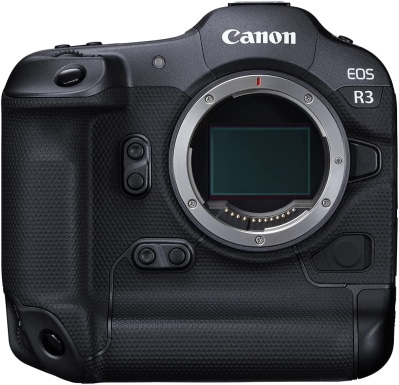
| Type | Mirrorless |
| Megapixels | 24.1 megapixels |
| ISO Range | 100–10,2400 |
Although not the most powerful camera around, the Canon EOS R3 is perhaps the best camera available for shooting wildlife and sports. With over 1,000 autofocus points and great vehicle, eye, head, body, and animal detection, you’d be hard-pressed to find something better for shooting motion-packed scenes. With 30-FPS burst shooting and the ability to shoot 6K video internally, this is one of the best cameras that even pros use. It’s rather bulky and expensive, however.
- Vehicle, eye, head, body, and animal detection for better stills
- 30 FPS raw burst shooting
- Can shoot 6K video internally
- Bulky
- Expensive
4. Canon EOS RP
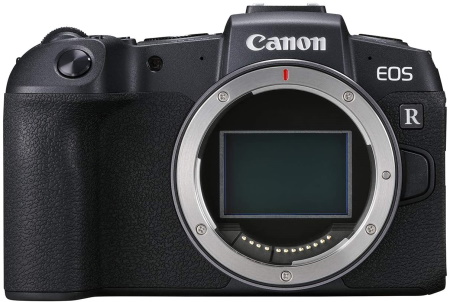
| Type | Mirrorless |
| Megapixels | 26.2 megapixels |
| ISO Range | 100–25,600 |
If you’re not a professional photographer but want a quality camera that’s a bit more affordable and compact, the EOS RP is perfect for you. The AF has over 4,700 points and compatibility with Canon’s trusted RF lens line. The bright rear screen is bright and responsive, and it takes vibrant, clear photos. Its continuous shooting speed is a little low at just 5 FPS, but it shoots 4K video, which is nothing to scoff at for a camera that’s a few years old.
- 4,700+ AF points
- Compatible with Canon RF lenses
- Compact size makes it easy for even beginners to use
- Great buffer depth
- 6x crop on video
- Lackluster battery life
5. Canon EOS 90D

| Type | DSLR |
| Megapixels | 32.5 megapixels |
| ISO Range | 100–25,600 |
One of the best hybrid cameras for shooting photos and video alike, the Canon EOS 90D can shoot 4K UHD 30-pixel videos, plus the 45-point all cross-type AF helps to track and shed light on moving subjects. It’s compatible with Wi-Fi and Bluetooth for wireless sharing, too. For shooting live video, Canon’s Dual-Pixel CMOS AF has over 5,400 points for a smooth, camcorder-like experience. If you’re interested in taking both photos and video, the EOS 90D is a great entry point for enthusiasts.
- Shoots 4K
- Bluetooth & Wi-Fi capable
- Robust AF system for both photos and video
- Poor image stabilization
- Soft 4K output
6. Canon EOS 5D Mark IV
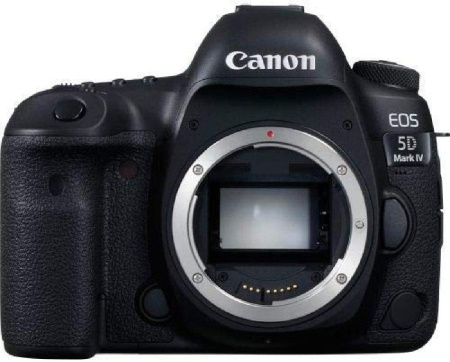
| Type | DSLR |
| Megapixels | 30.4 megapixels |
| ISO Range | 100–32,000 |
This camera may look cheap, but the build construction is super-durable for shooting in any condition. It shoots 4K in 24 pixels or 30 pixels and connects to Wi-Fi for wirelessly sharing photos or video. It also comes with Canon Dual-Pixel CMOS AF, a wide and expandable ISO range, and a 7 FPS burst mode. The LCD touchscreen is kind of plain, but it allows you to adjust your AF zone. The wide range of settings is welcome, but beginners might have a hard time navigating the controls.
- Great 4K output for photos and video alike
- Wi-Fi capable
- Wide, expandable ISO range
- 7 FPS burst mode for taking multiple photos quickly
- Not beginner friendly
- Takes practice to change AF settings
7. Canon EOS M200
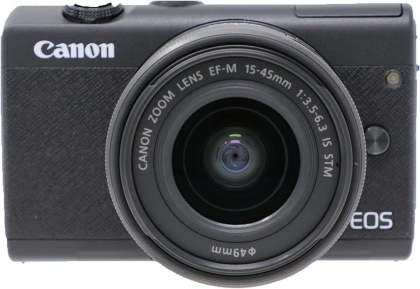
| Type | Mirrorless |
| Megapixels | 24.1 megapixels |
| ISO Range | 100–25,600 |
With a slim form factor and a wide range of accessories, the EOS M200 is one of the most beginner-friendly options on our list. The flip-up touch screen is responsive and allows you to change most settings, which is useful for former smartphone photographers. The Creative Assist mode and dedicated self-portrait mode add even more versatility to a great everyday camera.
- Pocket-friendly slim design
- User-friendly settings and modes
- Wide range of useful included accessories
- Eye detection is off by default
- Lack of advanced options limits experienced photographers
8. Canon PowerShot G9 X Mark II
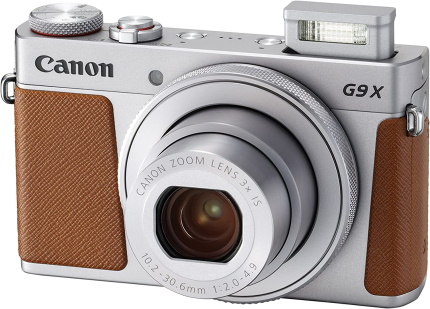
| Type | Digital |
| Megapixels | 20 megapixels |
| ISO Range | 400–12,800 |
If you don’t like fiddling with lots of settings, the Canon PowerShot G9 X Mark II is perfect. It’s a more familiar digital camera than the fancy mirrorless and DSLR options out there that might intimidate newer photographers. The 1-inch sensor puts out clear, detailed 20-megapixel images, the 3-inch touchscreen is easy to navigate, and it’s pocket-friendly. It’s also Wi-Fi and Bluetooth capable of sharing photos on the go. However, it does have a short battery life and slow continuous shooting mode.
- User-friendly design
- Surprisingly powerful sensor for a digital camera
- Wi-Fi and Bluetooth capable
- Higher price point than entry-level Canon DSLR cameras
- Slow continuous shooting mode
- Short battery life

Buyer’s Guide: How to Select the Best Canon Cameras
When buying a camera, you have to consider a lot of factors. Among the most important are the type of camera, megapixels, and the presence or lack of advanced options. Let’s check out why those are important, so you know what to look for in a camera.
Camera Type
There are three major types of cameras: digital, DSLR, and mirrorless. Digital cameras are generally less powerful than the other two, with fewer advanced options and other frills. They also have a digital sensor and automatic settings that allow nearly anyone to pick one up and take a good photo. Digital cameras are the cheapest of all cameras, though expensive exceptions are out there too.
The difference between DSLR and mirrorless is more complex. DSLR or digital single-lens reflex cameras have advanced digital sensors that let them take commercial-quality photos and video, a wide range of advanced settings, and a ton of lens options. Many DSLR cameras are used for sports, nature, and other commercial photography where quality is important.
DSLR cameras range from affordable to extremely expensive, which makes them great for beginners who want to learn everything photography has to teach.
What sets mirrorless cameras apart is that they don’t have a mirror inside the camera to reflect light onto the sensor in order to take photos. As a result, mirrorless cameras can take more high-quality photos than most mid-range DSLR cameras, with 4K video capability becoming standard. They also have simpler controls than DSLR, interchangeable lenses like DSLR, and an easy point-and-shoot design like digital cameras. It’s the best of both worlds, but this quality comes at a premium when it comes to price. Even the cheapest mirrorless cameras will run you as much as a quality DSLR camera.

Megapixels
The megapixels on a camera determine how detailed your photos are. One megapixel is equivalent to 1 million “photosites” in a camera’s sensor, which each become filled in with color when you shoot a photo or video.
Confusing? More simply, more megapixels mean you can take larger photos in greater detail. In photography, fine detail is very important, especially for commercial photography like nature and cosmetic photography. Higher megapixel photos can be printed larger without losing detail, which is imperative for billboards and large screens.
Higher megapixel cameras are more forgiving for beginners to use, too. Even if your shot doesn’t turn out right, you can zoom and crop it without losing too much clarity. However, the main downside of higher megapixels is that the file sizes become much larger, demanding high-capacity storage.

Advanced Options
How many options a camera has allows you more freedom to change how your photos or video turn out. Digital cameras have minimal settings, while DSLR has the most, and mirrorless cameras have a lot of settings as well. Let’s check out some of the most important settings to look for in a camera. Settings to look for include:
- Aperture: Aperture size directly affects exposure, depth of field, and sharpness.
- Shutter Speed: Shutter speed affects exposure as well as how motion is portrayed.
- ISO: Along with the previous two settings, ISO is critical in adjusting exposure, plus it reduces digital noise.
- Image Stabilization: This setting is absolutely critical when shooting in handheld mode to eliminate motion blur.
- Exposure Compensation: This setting allows you to deliberately underexpose or overexpose images for artistic effect.
- Focus Settings: While most default AF settings are great for still photos with minimal motion, you’ll want continuous AF for shooting photos or videos with lots of motion.


Conclusion
Canon is one of the most respected camera makers in the world, and many photographers swear by their cameras for everything from taking pictures at the beach to world-class photography. If you want the best of the best, look no further than the Canon EOS R5, with all the power and settings you can imagine. If you can’t afford that, the Canon EOS 6D Mark II is a more budget-friendly option that doesn’t sacrifice on quality. Even if you don’t go with one of those, we hope our reviews have helped find you the perfect camera.
Featured Image Credit: Piqsels
About the Author Codee Chessher
Codee Chessher is a freelance writer with extensive knowledge on a variety of subjects that include travel, sound engineering, automotive, optics, DIY, pets, and more. He has a colorful past that includes building schools and commercial driving, but the written word was always his first love and continues to be his passion. He believes there's nothing a well-worded sentence can't accomplish.
Related Articles:
How to Clean a Refractor Telescope: Step-by-Step Guide
How to Clean a Telescope Eyepiece: Step-by-Step Guide
How to Clean a Rifle Scope: 8 Expert Tips
Monocular vs Telescope: Differences Explained (With Pictures)
What Is a Monocular Used For? 8 Common Functions
How to Clean a Telescope Mirror: 8 Expert Tips
Brightfield vs Phase Contrast Microscopy: The Differences Explained
SkyCamHD Drone Review: Pros, Cons, FAQ, & Verdict



